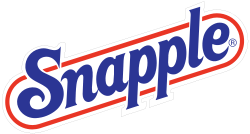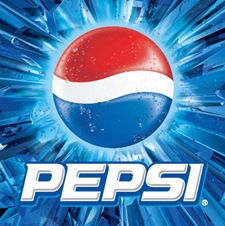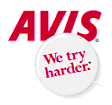Another great lesson from Small Fuel:

How To Turn A Disadvantage Into A Competitive Edge
Every small business dreams of becoming a big business – but achieving size and influence can be a long time coming, especially in a market that is becoming more crowded by the week.
Fortunately, you don’t have to be “number one” to have your sales numbers experience a satisfying increase – you just have to get creative and discover how to frame a perceived disadvantage as a powerful competitive edge. Here are the stories of three companies who did just that, and enjoyed a larger market share as a result.
Snapple’s Off-Beat Anthem: “We’re #3”
 About a decade ago Snapple was growing fast, with sales quadrupling every year. This was a huge win for them in the juice-and-soda market, but truth be told, they were still dwarfed by the sales of soft drink giants Coca-Cola and Pepsi. In an industry where every company tries to tout itself as the best at something – speed, price, quality and so on – Snapple didn’t seem to have a strong message they could put into a 30-second sound bite.
About a decade ago Snapple was growing fast, with sales quadrupling every year. This was a huge win for them in the juice-and-soda market, but truth be told, they were still dwarfed by the sales of soft drink giants Coca-Cola and Pepsi. In an industry where every company tries to tout itself as the best at something – speed, price, quality and so on – Snapple didn’t seem to have a strong message they could put into a 30-second sound bite.
They had a great product line that was growing and expanding, which was a great pitch for stockholders. But how can a company translate great sales figures into a message that would make consumers want to buy even more of it – especially since so many more people were buying Coke and Pepsi products?
Snapple did it by crafting a clever commercial where mobs of people ran down the streets holding up “#3” signs and chanting “We’re #3! We’re #3!” They weren’t bigger than Coke or Pepsi, but they could at least flaunt the fact that nobody else but Snapple was even close. The goal? Position the Snapple brand next to the top two soda brands and catch the “halo effect” that being associated with them would bring. Snapple positioned itself as a major player – and not just a quirky niche brand – with this clever move.
Lesson Learned: If you can’t be on the A-List, learn how to get yourself seen as in the same light as those who are.
Pepsi’s Counter-Culture Gamble: Don’t Trust Anyone Over 30
 World War II was big business for Pepsi rival Coca-Cola – through a deal with the US Government, Coke supplied five-cent sodas to servicemen in exchange for corporate exemption from sugar rations. Thanks to this shrewd deal by Coke’s leader, Pepsi didn’t stand a chance of capturing market share. With Coca-Cola associated as the “little taste of home” for war weary soldiers, Pepsi lost considerable market share. To make matters worse, when the servicemen returned home they were Coke drinkers for life, due to the strong emotional bond formed with the brand while overseas.
World War II was big business for Pepsi rival Coca-Cola – through a deal with the US Government, Coke supplied five-cent sodas to servicemen in exchange for corporate exemption from sugar rations. Thanks to this shrewd deal by Coke’s leader, Pepsi didn’t stand a chance of capturing market share. With Coca-Cola associated as the “little taste of home” for war weary soldiers, Pepsi lost considerable market share. To make matters worse, when the servicemen returned home they were Coke drinkers for life, due to the strong emotional bond formed with the brand while overseas.
How did Pepsi win these customers back? They tried for years, but ultimately, they never did. Instead, they grew by going after a group that they could win over – those Coca-Cola drinkers’ children. By tapping into the inherent need for kids to rebel against their parents, they rebranded themselves as a youth-oriented drink, and in 1963 created the “Pepsi Generation” as a vehicle to sell not just a soda, but a way of life. This campaign was so successful that it even enjoyed a resurgence twenty years later as “The Choice of a New Generation” when those Pepsi converts had kids of their own.
Lesson Learned: If you can’t make a dent in a competitor’s loyal customer base, find a group that identifies as opposite from that group, and make them loyal to you instead.
Avis’ A+ For Effort: It’s The Thought That Counts
 Like Coke and Pepsi, Avis and its larger competitor Hertz duke it out for control of the rental car market. With no room for doubt, Hertz overshadows Avis in terms of size, so Avis decided to take a simple and direct approach to positioning themselves as the superior company. What did they do? They repositioned their competition in a way that made them the “good guys.” And all they needed was three simple words, which made their debut in magazines back in 1962: “We Try Harder.”
Like Coke and Pepsi, Avis and its larger competitor Hertz duke it out for control of the rental car market. With no room for doubt, Hertz overshadows Avis in terms of size, so Avis decided to take a simple and direct approach to positioning themselves as the superior company. What did they do? They repositioned their competition in a way that made them the “good guys.” And all they needed was three simple words, which made their debut in magazines back in 1962: “We Try Harder.”
It was pure marketing genius. They took the common customer frustration of poor customer service and capitalized on it with ads that said things like “We just can’t afford dirty ashtrays … or half-empty gas tanks … or unwashed cars …” and “Go with us next time – the line at our customer counter is shorter.” Avis hit a marketing gold mine by positioning their competitor as cold, impersonal, and uncaring, and reframed themselves as the company who cares about you. Did it work? In four years their market share more than tripled, going from 11% to 35%.
Lesson Learned: Sometimes the best way to make your brand stand out is to highlight the things you’re doing right (that your competitors aren’t).
What’s Your Small Business’ Competitive Edge?
You may not be number one in your industry … but by now you know that can be a very, very good thing. By approaching your marketing campaign as an exercise in highlighting your small business strengths and re-framing the way your competitors appear to your target market, you could very well see your market share make similar gains – because you don’t have to be number one to have one of your greatest years ever.
Sphere: Related Content













No comments:
Post a Comment